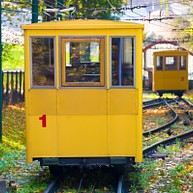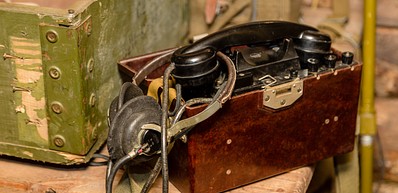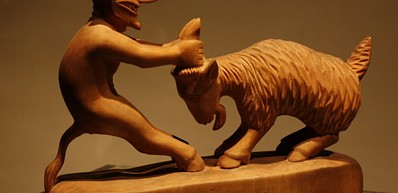
-
![tulips in botanic garden]() Provided by: Anna Bolsch/Shutterstock.com
Provided by: Anna Bolsch/Shutterstock.com

Our travel guides are free to read and explore online. If you want to get your own copy, the full travel guide for this destination is available to you offline* to bring along anywhere or print for your trip.
*this will be downloaded as a PDF.Price
€4,95
Kaunas Botanical Garden
The guide was updated:With its blossoming flower gardens and interesting greenhouse and pond system, this 62-hectare garden, maintained by Vytautas Magnus University, is the perfect spot to take a romantic stroll.
Useful Information
- Address: Ž. E. Žilibero g. 6, Kaunas
- Opening hours: Daily 9:00–19:00
- Website: botanika.vdu.lt
- Public Transport: Buses 20, 32, 35
- Phone: +370 37 390 033
- Email: bs@vdu.lt
Digital Travel Guide Download
Our travel guides are free to read and explore online. If you want to get your own copy, the full travel guide for this destination is available to you offline* to bring along anywhere or print for your trip.
*this will be downloaded as a PDF.Price
€4,95

The Town Hall, often called the White Swan, is a true spectacularity with its impressive 53-metre tall tower. It was built in 1542, after the former building had been destroyed by the fire. Located at the centre of what once was a marketplace, today it is a popular wedding scene, and houses a pottery museum, as well as the Kaunas City Museum, representing the rich cultural and political history of Kaunas. Don't forget to hunt for the sculpture bugs, unveiled here in homage to "European Walt Disney" Władysław Starewicz!
Read more

Pažaislis Monastery
This ensemble is regarded as the most beautiful Baroque-style landmark in the Baltic states, nestled in foresty Kaunas Reservoir. The church and abbey were built for Camaldolese monks in the 17th century, under the supervision of Italian masters from Florence. Its on-site museum offers educational classes and a small cinema.
The monastery is home to about 140 frescoes of varying sizes, including the famous painting of the Mother of Fair Love, which was presented to Kristupas Zigmantas Pacas, founder of the Pažaislis Church, by Pope Alexander VII in 1661.
Read more

Ninth Fort
Kaunas was a significant cultural base of the Jews living in Lithuania; its Jewish community amounted to one third of the city's inhabitants, and the ghetto set up here further increased their number. Fort IX is a stronghold and museum that commemorates Kaunas's eventful history, and the people who were killed or imprisoned here under the WWII Holocaust.
Read more

St. Michael The Archangel Church
Commonly known as the garrison church, this Neo-Byzantine-style building was designed and built by order of Russian Tsar Alexander III in the late 19th century. Located at the eastern end of the main pedestrian street Laisves aleja, it is one of the most impressive landmarks of the city, and a lot more than a Roman Catholic church: the catacombs underneath are home to the Museum for the Blind, where there is not much to see—but a lot to experience!
Read more

Funiculars in Kaunas
Embarking on a funicular journey is a unique experience in Kaunas, as this is the only city in the Baltic states where this means of transport is available. The Žaliakalnis, built in 1931, is one of the oldest funiculars still in operation in the world. The other funicular in Kaunas, Aleksotas is much sought for the view you'll get (of the Old Town) once you reach the hill of the same name.
Read more

Kaunas Castle
Located at the confluence of the Nemunas and Neris rivers, this impressive brick castle was built in the 14th century at the beginning of the Teutonic attacks. Unique for its double walls and the surrounding tunnel, many events and legends of Lithuanian history are attributed to it. Today, the castle is home to various temporary and permanent programs all year round. Join educational trips and exhibitions, mould a stove tile, and try your knowledge with the Castle Quiz. Just opposite the castle, St. George the Martyr Church is also worth a visit, for it is an important landmark of Roman Catholicism.
Read more

Ąžuolynas Park
This is not an ordinary oak grove, as its name suggests, but the largest in whole urban Europe! Visit the Kaunas Zoo nearby, or simply take a stroll here, and try to find the rock which Adam Mickiewitz carved on at his favorite spot.
Read more

Atomic KGB Bunker
Just six metres underground you'll find yourself in the interesting world of WWII relics—gas masks, surveillance equipment, aircraft black boxes, radiation meters, have been all gathered here to give you a unique insight into this dark era of history.
Read more

Devil's Museum
Also named Žmuidzinavičius after its main collector, Devil's Museum is a unique collection of how the devil is depicted around the world. Currently more than 3,000 pieces are on display, collected from 70 countries, and counting.
Read more

The Historical Presidential Palace
Served as the presidential palace between 1919 and 1940, this building is one of the most important locations of Lithuanian history. Once the home of presidents like A. Smetona, K. Grinius and A. Stulginskis, today it hosts various cultural events, as well as permanent and temporary exhibitions.
Read more

Stumbras Museum
Stumbras is the largest liquor company in Lithuania, and this museum showcases the history of the still-operational distillery, as well as its impact on alcohol consumption and industrialisation in Lithuania since its foundation in 1906. Find out how the best Lithuanian vodka is made!
Read more

House of Perkūnas
A merchants' place during Hanseatic times, then a school also attended by Adam Mickiewicz, this Gothic building has always had an important role in Lithuanian history. The building is named after Pagan god Perkūnas, whose sculpture was revealed during the reconstruction works in 1919.
Read more

M. K. Čiurlionis National Museum of Art
Named after Lithuania’s most prominent Art nouveau artist and composer, this gallery displays a vast collection of Lithuanian art in collaboration with multiple other museums and galleries throughout the city. Ancient world art, folk art, and an exhibition on numismatics are also on display here, together with various temporary ones.
Read more

Church of Vytautas the Great
Named after the ruler of the Grand Duchy of Lithuania, oftentimes regarded with the rise of Lithuanian consciousness, this is the oldest church in Kaunas, built in 1400 by Franciscan monks. This impressive Gothic landmark by the Neman river (and the bridge bearing the same name) has suffered several floods in the past, and there's a scale by its side that marks the memories of those critical times.
Read more

Sugihara house
The building is named after Japanese diplomat Chiune Sugihara, acclaimed for saving the lives of 10,000 Lithuanian, Polish and German Jews during WWII, by issuing Japanese visas for them. The museum exhibits all the important moments of his and the refugees' lives, shedding light on the years of the war as well as its aftermath.
Read more

Christ's Resurrection church
This Roman Catholic church was built to celebrate Lithuanian independence, regained in 1918. A unique landmark in Kaunas not only for its modern functionalist layout, but it is also regarded as the largest basilical church in the Baltic states.
Read more

Cathedral Basilica of St Peter and Paul
St Peter & Paul's is the largest Gothic structure in Lithuania, and the country’s only Gothic church with a basilica floor-plan as opposed to the usual cross-shaped design. Its one-of-a-kind interior, with its nine altars, is also breathtaking. During its history, it was rebuilt several times, which has given the building an eclectic look, with some Renaissance features included.
Read more

Church of St. Francis Xavier
Located in the heart of Old Town, this 17th-century Jesuit church is another Baroque gem of Kaunas. It also has a terrace with a stunning view of Town Hall square.
Read more

Kaunas Botanical Garden
With its blossoming flower gardens and interesting greenhouse and pond system, this 62-hectare garden, maintained by Vytautas Magnus University, is the perfect spot to take a romantic stroll.
Read more

Open-Air Museum of Lithuania
Just 20 km east of Kaunas city centre, this is one of the largest ethnographic museums of Europe. It showcases Lithuanian rural life through ample collections on agriculture, architecture, and traditions. Various tours, horse rides, as well as accommodation available on the spot.
Read more


